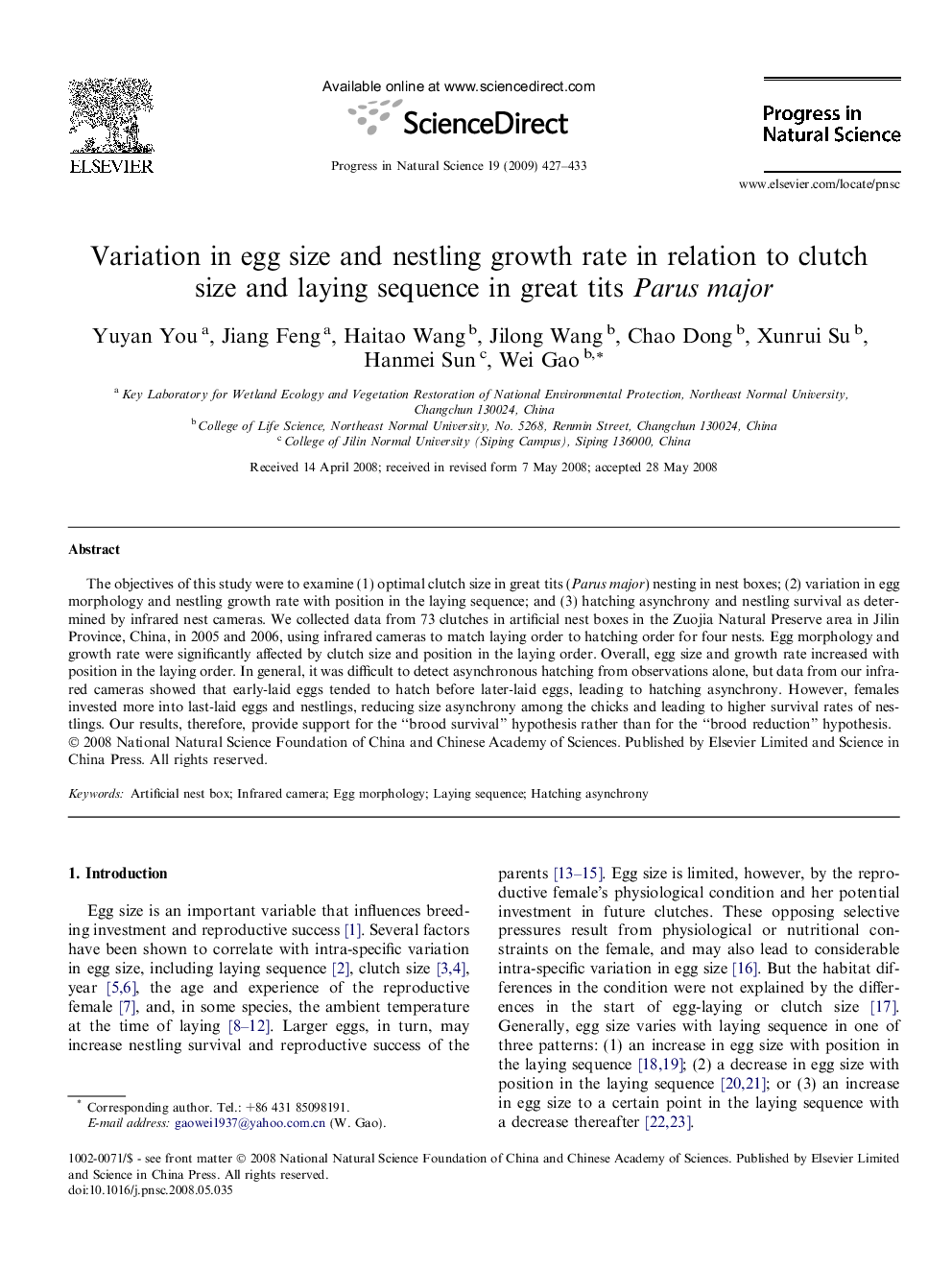| Article ID | Journal | Published Year | Pages | File Type |
|---|---|---|---|---|
| 1548923 | Progress in Natural Science: Materials International | 2009 | 7 Pages |
The objectives of this study were to examine (1) optimal clutch size in great tits (Parus major) nesting in nest boxes; (2) variation in egg morphology and nestling growth rate with position in the laying sequence; and (3) hatching asynchrony and nestling survival as determined by infrared nest cameras. We collected data from 73 clutches in artificial nest boxes in the Zuojia Natural Preserve area in Jilin Province, China, in 2005 and 2006, using infrared cameras to match laying order to hatching order for four nests. Egg morphology and growth rate were significantly affected by clutch size and position in the laying order. Overall, egg size and growth rate increased with position in the laying order. In general, it was difficult to detect asynchronous hatching from observations alone, but data from our infrared cameras showed that early-laid eggs tended to hatch before later-laid eggs, leading to hatching asynchrony. However, females invested more into last-laid eggs and nestlings, reducing size asynchrony among the chicks and leading to higher survival rates of nestlings. Our results, therefore, provide support for the “brood survival” hypothesis rather than for the “brood reduction” hypothesis.
